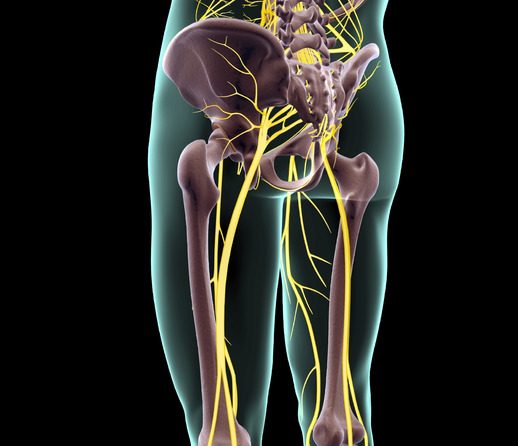Sciatica refers to pain coming from the sciatic nerve, which runs from the lower back down the back of the leg and into the foot. It is a common condition that affects many people at some point in their lives. Sciatica describes the symptoms associated with sciatic nerve compression but does not identify the underlying cause of the nerve compression.
The most common cause of sciatica is a herniated disk in the lower back. This occurs when the disc changes shape and presses on the sciatic nerve. Other causes of sciatica include nerve compression from muscle tightness, bruising from trauma around the nerve, spinal stenosis (which is a narrowing of the spinal canal), osteoarthritis, or degenerative disc disease.
Symptoms of sciatica can vary depending on the underlying cause, but they often include pain, numbness, or muscle weakness, as well as tingling or burning sensations. The pain may be severe or mild, and it may be constant or intermittent.
Treatment for sciatica typically involves a combination of physiotherapy, medications, and self-management strategies. Physiotherapy can help to reduce inflammation and improve flexibility and strength in the lower back, hips, and legs. Medications, such as nonsteroidal anti-inflammatory drugs (NSAIDs) and muscle relaxants, can help to manage pain and inflammation.
In addition to these treatment options, there are several self-management strategies that can help to reduce the symptoms of sciatica. These include:
Stretching exercises: Gentle stretching can help to improve flexibility and reduce stiffness in the lower back, hips, and legs. All stretches should be pain free.
Strengthening exercises: Strengthening exercises that target core strength and back and leg muscles, can help to improve the stability of the lower back and reduce the risk of future injuries.
Good posture: Maintaining good posture can help to reduce the strain on the lower back and reduce the risk of injury.
Hot and cold therapy: Applying heat or cold to the affected area can help to reduce pain and inflammation.
Applying the 5 stages of rehab to sciatica.
Pain – Pain and symptom reduction is best achieved by reducing compression of the sciatic nerve. This may mean treatment is focused on other tissues to reduce pressure on the sciatic nerve. In some cases medications may be required to reduce inflammation around the nerve, or reduce nerve sensitivity.
Range of motion – Compression of the sciatic nerve will result in reduced neural mobility and flexibility. Treating the underlying cause, reducing pressure along the path of the nerve, and practicing neural glides and slides will help improve neural mobility and place you on the path to regain full range of motion.
Motor control – Learning to control where movement occurs and how to stabilize the lower back under high loads reduces compression of the sciatic nerve. Most episodes of sciatica are associated with incorrect load distribution. A primary concern is overloading tissue around the sciatic nerve which may result in nerve compression and sciatica.
Strength – Strength training the muscles and other soft tissues surrounding the sciatic nerve builds a capacity to tolerate higher functional demand.
Maintain – Overloading the tissues surrounding the sciatic nerve will typically lead to a return of sciatica. Ensuring range of motion, motor control and strength gains are maintained will help prevent the return of symptoms associated with sciatica.
For further information regarding sciatica please see the below links:
https://www.betterhealth.vic.gov.au/health/conditionsandtreatments/sciatica


